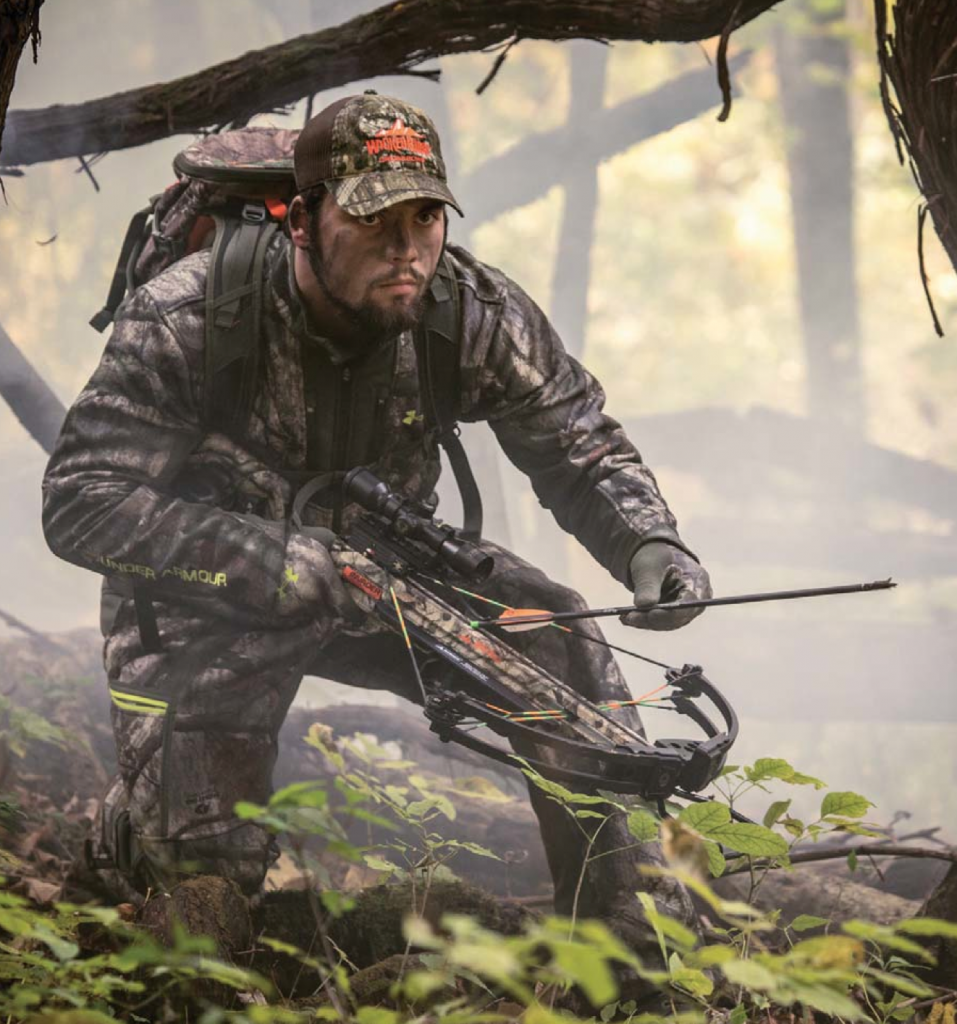
If you are in the market for a crossbow, don’t know much about them, and are looking for advice, follow these practical guidelines to help you reach a decision you won’t be sorry about once you take to the woods.
First, the best advice is: don’t buy any crossbow without shooting it enough times to be able to decide if it suits you. Better yet, don’t buy any crossbow without trying out as many of them as you can get your hands on. Crossbows vary considerably from manufacturer to manufacturer, and you want to be certain that you can operate yours without difficulty and that it offers you the right fit, feel, and balance. Simply stated, the best crossbow for you will feel right when you cock, load, aim, and shoot it.
If you want to be even more certain that you have done your due diligence before handing over your hard earned money, here is a more specific approach to making your purchase decision.
Recognize, Address Any Physical Limitations While the crossbow makes it possible for most everyone regardless of age, sex, size, and/or physical ability to bow hunt, not all crossbows are equally easy to operate and handle for your physical prowess.
Cocking Your Crossbow A number of crossbow manufacturers offer cocking aids – the most common solution for those who cannot or do not wish to cock their crossbow manually – but, again, there are plenty of options. Some units are clamp-on and must be removed before shooting. Some are integrated into the butt stock.
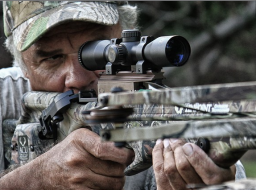
Do Your Research You’ll want to do your research ahead of time, test a variety of options, and choose the most user-friendly unit that best fits your needs. For example, TenPoint’s integrated ACUdraw cocking mechanism uses a crank to reduce the amount of effort needed to cock the crossbow to approximately six pounds, while their ACUdraw 50 is an integrated rope-cocking mechanism that reduces the effort to cock the crossbow by 50 percent. In addition, there are plenty of rope-cocker options in the market that also reduce the crossbow’s draw weight by 50 percent.
Physical Stature Hunters come in all shapes and sizes, so there is no one-size fits all crossbow. However, some crossbow stocks give the hunter flexibility when it comes to eye relief and length-of-pull. Such is the case with TenPoint’s ABX (Adjustable Bullpup Crossbow) stock, as both the rubber cheek piece and butt plate adjust to create perfect eye-level adjustment, eye-relief, and length-of-pull.
Some manufacturers even design specific crossbows for youth, women, and small-framed hunters. Among many options, the Wicked Ridge Ranger line of crossbows are ideal for youth, women and seniors because of their lighter mass weight, shorter length-of-pull and lower draw weight.
Consider Cost Before Entering the Store Crossbow prices range from about $399 for a simple entry-level model to as much as $2,500 for a precision engineered, high-performance model that comes with every accessory you could ever want or need. Obviously, if you have a price in mind beforehand that you cannot exceed, let the salesman know that up front.
A good salesman probably will ask how much you are willing to spend anyway, so he or she can serve you better. Keep in mind, though, that different price ranges offer different levels of features and more important, quality, so you’ll want to test as many models as possible.
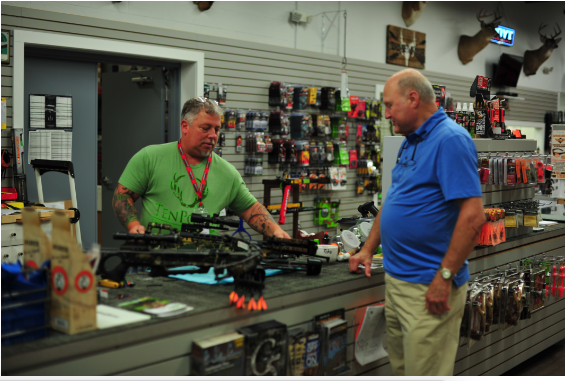
Research the Manufacturers Check the track record of the crossbows/crossbow manufacturers you are considering. Not all crossbows or crossbow manufacturers are the same, so it is vital that you do plenty of research on each manufacturer prior to arriving at the shop.
Once you begin handling the crossbows, you can tell some things about the quality of the crossbow by examining how well it is made. If certain parts look flimsy, cheaply made, or do not fit together well, you can expect them to fail under higher than average use. An experienced salesman should be able to tell you what kind of a failure rate to expect with certain models. Also, your salesman should have a good idea about the quality of each manufacturer’ products, customer service department, and warranty claims department.
Never be afraid to ask questions regarding the manufacturer’s return rate, warranty, customer service, and overall satisfaction of previous customers.
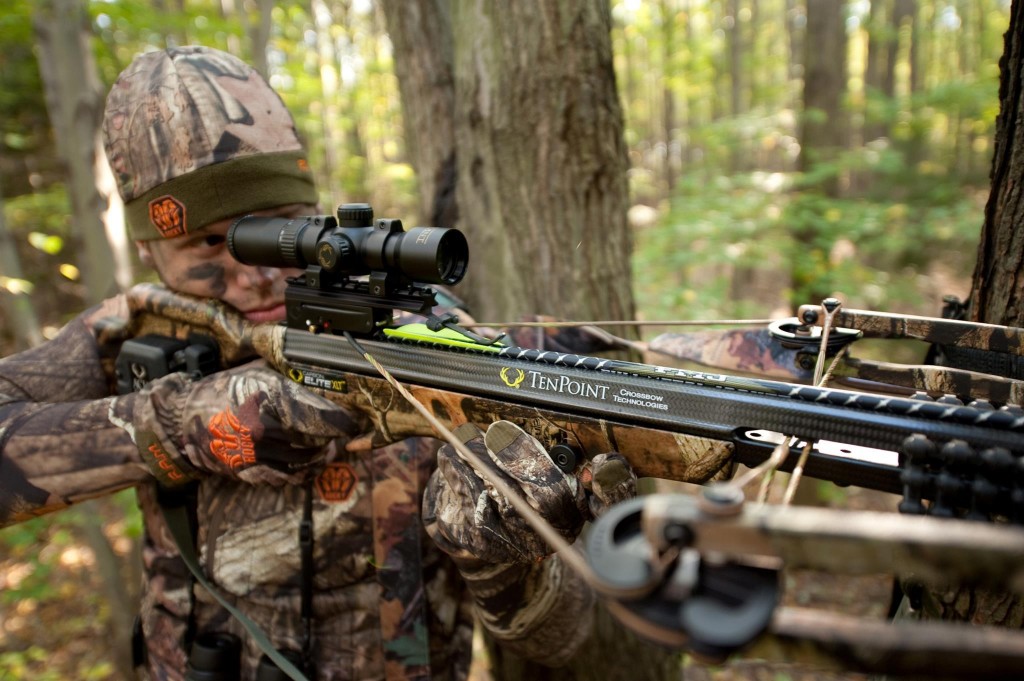
Consider Speed, Noise, Recoil and Weight
- Speed. On average, today’s crossbows shoot between 300 and 380 feet per second (fps). Shooting at 300 fps is plenty fast enough to do the job efficiently, but a 380 fps crossbow will hit harder and have a flatter trajectory, making distance judging less of an issue. Most companies achieve additional speed by adding cams, increasing the power stroke, and using heavier limbs. The trade-offs for increased speed, however, are usually a louder shot, more recoil, and greater difficulty cocking the crossbow.
- Noise Level. For many archers, noise level is a primary concern. While manufacturers continue to focus on improving the noise level, there are a handful of accessories that help as well, such as the Bowjax Noise Dampening Kit.
- Recoil. Excessive recoil can affect shooting accuracy. Top manufacturers are constantly improving their crossbow’s design to limit the amount of recoil, so be sure you test a variety of models.
Weight. A crossbow can also be too light or too heavy for a particular shooter. A light crossbow with severe recoil can be hard to control. A crossbow that is too heavy can also be difficult to control. It is very hard to shoot accurately with a crossbow that wants to move around while you are aiming and shooting it.
In general, the more crossbows you test fire the better able you will be to zero in on the model that has the best speed, weight, noise, and recoil configuration for you. You want to be comfortable shooting the crossbow you choose!
Research Safety Features Yes, there are times you may need to sacrifice features for price. Safety is one area you should never sacrifice. Research the safety features of each model you are considering, then head to the shop and check them out. TenPoint crossbows, for example, are equipped with an auto-engaging safety, a Dry-Fire-Inhibitor (DFI), safety wings, and on some models a pass-through fore-grip. If the crossbow you are considering doesn’t have a laundry list of safety features, head back to the drawing board and reconsider your options.
Consider the Balance Pick up a variety of crossbows and find the balance point. Crossbows with excess weight at the front may be more difficult to handle when shooting out of a treestand or trying to hold steady while standing. The reverse draw crossbow design is gaining popularity because its balance point is farther back toward the shooter, so it feels much, much lighter. You’ll want to test both forward draw and reverse draw crossbows.
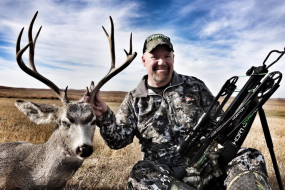
Determine the Length, Width For Your Specific Situation When shooting at a range or off of a bench, the length and width of the crossbow is not as critical as shooting out of a blind or out of a treestand. Generally, most range shooting takes place when the weather is warmer vs. colder and our clothing is usually light-weight and less bulky. Comfort at the range, especially the crossbows length, may equate to discomfort when hunting. Keep your hunting clothing in mind when “trying on” your prospective crossbow.
Ground Blinds Hunting out of a blind comes with its own set of considerations. How wide are your windows? Is your blind solid or made out of material? A soft-sided blind will be more forgiving if your limbs or cams were to hit the edges of the window vs. a hard-sided blind. Are you using a SteddyEddy, a tripod or holding the full weight of the crossbow?
Make sure you have enough room for your seat and any other items you may be using to support the crossbow. If you are not using a support or rest, you may get a case of the nervous jitters or the crossbow may become too heavy to hold up for an extended period of time. Plan ahead.
Treestands If you are treestand hunting with a crossbow, the length of the crossbow is extremely important. Your crossbow will usually feel longer the higher you go up the tree. This longer-feeling crossbow may now be extremely uncomfortable and heavy to hold, especially if you have a stand without a shooting rail.
Crossbow manufacturers continue to push the envelope with compact designs, most noticeably the RDX and XLT crossbows from TenPoint, because a compact width crossbow is a major advantage if you have very narrow shooting lanes or tight quarters in the stand.
Pay Attention To Trigger Pull Trigger poundage and creep affect shooting accuracy as well. A trigger with no creep (one that releases without any travel or warning) is dangerous and one with too much creep will be difficult to squeeze steadily. Similarly, a trigger that is too light (a hair trigger) is dangerous and one that is too heavy also will be difficult to squeeze steadily. Crossbows with premium triggers shoot more accurately because they are more likely to have optimum travel and poundage.
Trying On Your Prospective Crossbow Narrow your crossbow search based on how you plan to use the crossbow. Don’t get caught up in the ritual of standing in a store shouldering and pointing the crossbow in the air unless you plan on shooting things out of trees. This is not a good representation of how the crossbow really fits or feels to you in real-world hunting and shooting situations.
Sit in a chair or on a stool, then point the crossbow forward if you plan to hunt out of a blind most of the time. If you will be hunting out of a treestand, point the crossbow at the ground at an angle you would likely be shooting from. Do this with several crossbow models and you will begin to determine which crossbow models fit better than others.
Continue to narrow your search by shooting models you think are most comfortable to you. The best crossbow will feel right when you cock, load, aim and shoot it. Just because a model is perfect for your buddy, it may not be perfect for you. If you are comfortable with your crossbow, you will be confident with it out in the field and less likely to second guess your shots.
Research Local, State Laws Before Buying a Crossbow Determine what activities you are planning with the crossbow and find out if the model and/or accessories you are looking at are legal for your area. For instance, some states have specific regulations on scopes/red-dot sights, draw weight, and the use of cocking mechanisms. In addition, some local jurisdictions have regulations against discharging a crossbow (and firearms) within city limits.
No matter the make or model of crossbow you decide to invest in, always keep “Safety First” as your number one priority.













